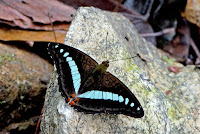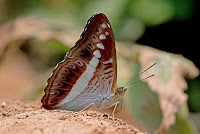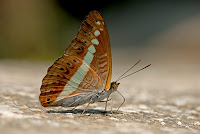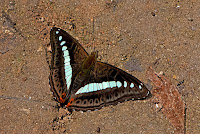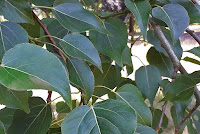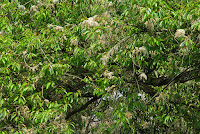<> Athyma daraxa (Doubleday,[1848]) <>
the Green Commodore ผีเสื้อแถบเขียวอ่อน
Click on any photo to see larger version
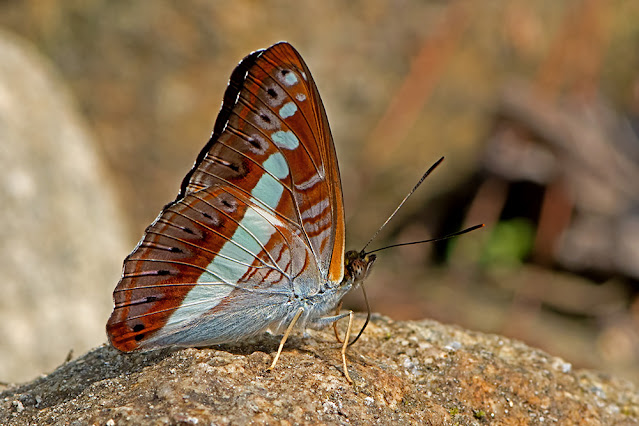
Photo taken at Doi Inthanon National Park, Chiang Mai, Thailand. 1060m a.s.l.

Until recently, better known as Sumalia daraxa. Although it is distributed across a large part of the region, this species is not common and can be very localised. It is not often seen due to its habit of flying high and fast in the forest canopy but males do sometimes descend to ground level to puddle or feed on dung or carrion. The sexes look very similar to each other. There is not much information available but probably multivoltine with several broods per annum.
Synonyms and previously used names: Limenitis daraxa, Sumalia daraxa
Taxonomy: Animalia - Arthropoda - Insecta - Lepidoptera - Nymphalidae - Limenitidinae - Athyma - daraxa
Regional Distribution: India, Nepal, Bhutan, Bangladesh, Myanmar, Thailand, Laos, Cambodia, Vietnam, China, Malaysia
Habitat: evergreen montane forest edges near streams, up to 2200m a.s.l. Wingspan: 60-70mm
Flight time: most of the year, depending on location
Larval Hosts: Populus adenopoda, Populus glauca, Salix salwinensis, Salix tetrasperma (Salicaceae). Hosts used depends upon location and availability of plant species.
Adult Food Sources: Nectar - not known if flowers are visited for nectar. Other - mud puddling, carrion, animal dung
Links to other pages in this series for species in the same subfamily
Athyma perius
Auzakia danava
Euthalia alpheda
Euthalia lubentina
Lasippa viraja
Limenitis asura
Neptis cartica
Neptis miah
Pantoporia hordonia
Athyma daraxa
Athyma pravara
Bhagadatta austenia
Euthalia anosia
Euthalia monina
Lebadea martha
Limenitis dudu
Neptis clinia
Neptis nashona
Pantoporia paraka
Parasarpa zulema

